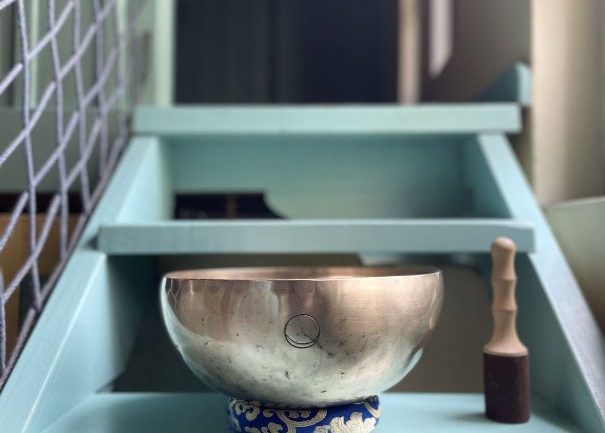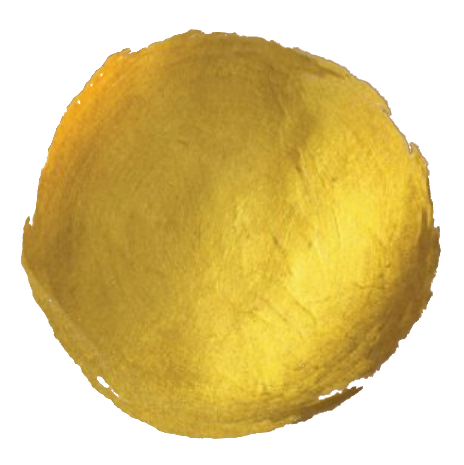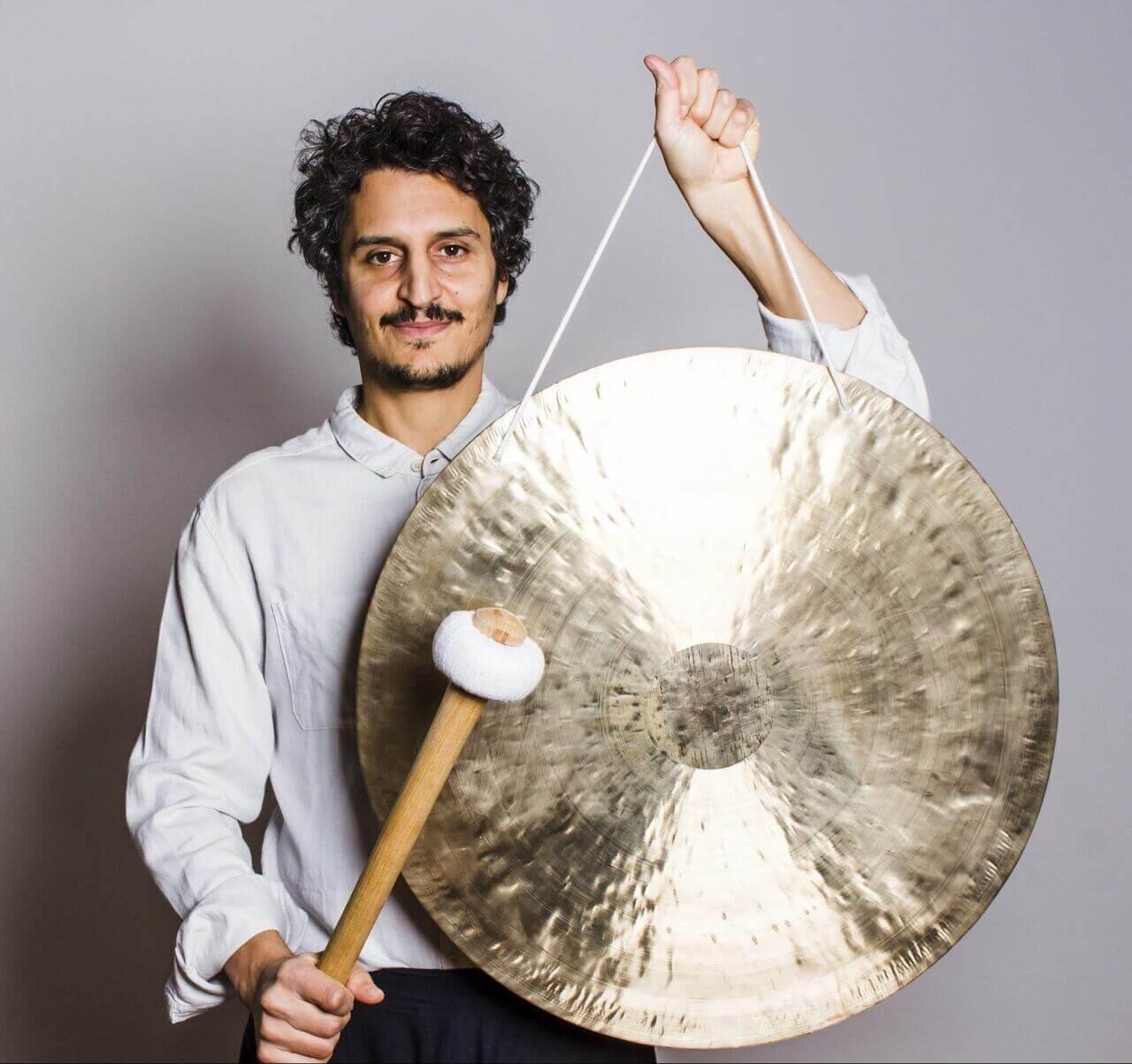Tibetan singing bowls also known as Himalayan singing bowls, have a long and mysterious history, dating back to the 4th or 5th century BC during the time of Gautama Buddha. However, despite my extensive research, conversations with experts, and reading numerous books and articles, there is no written historical record that sheds light on their origins or their exact use. Nevertheless, I will share the information I have gathered from various sources and books.
Origins and Use
It is believed that the bowls were introduced to Tibet from India when Buddhism took root in the 8th-9th century AD under the guidance of the teacher Padmasambhava. While some suggest they were used for meditation, others claim they were originally used as eating utensils. There are also theories that they have shamanic origins in the Bon tradition that predates Buddhism in Tibet. This lack of definitive historical evidence has led to ambiguity, and when questioned about the use of singing bowls in Buddhism, many monks either avoid answering or deny any connection.
The method of creation
Regarding their creation, the method of making Tibetan singing bowls has been passed down from generation to generation in India, Nepal, and Tibet. Each caste has its own unique techniques, and today, some craftsmen in Kathmandu continue to use these ancient methods to create bowls.
Tibetan singing bowls are believed to possess therapeutic properties, and their construction is rooted in the materials used and the process itself. Traditionally, these bowls were made of an alloy consisting of seven metals: gold, silver, iron, mercury, tin, copper, and lead. Each metal carries symbolic significance. During the crafting process, it would typically require 3 to 4 craftsmen who would chant and recite mantras, infusing the bowl with blessings and positive energy. One person would hold the hot metal with iron tongs, while the others took turns hammering and chanting, imbuing the bowl with healing intentions. The Shakyamuni tribe in Nepal still adheres to these traditional methods, and special “Full Moon bowls” are created by each producer on the day of the full moon.

Here is a full Moon singing bowl
Composition and Size
Tibetan singing bowls vary in size, with the average size ranging from 6cm to 50cm. However, they can also be larger or smaller depending on their intended use.
The unique combination of metals in each Tibetan singing bowl is believed to correspond to the seven heavenly bodies, seven chakras, and seven musical notes. The bowls are specifically tuned to a particular note and chakra, often producing multiple tones. The sound of each bowl arises from the individual sounds produced by the metals and their harmonics, which come together to create a harmonious whole. It’s important to note that not all bowls contain all seven metals. For example, Tibetan bowls are said to have more silver and tin, while Nepalese bowls have a distinctive gold color.
Are Traditional Methods Still Used?
As for whether traditional methods are still used in producing Tibetan singing bowls today, it’s difficult to say. The increasing demand for these bowls has led to a surge in production, and while some craftsmen in Nepal and India, like the Sakyamuni tribe I mentioned earlier, continue to create singing bowls using traditional methods passed down through generations, many craftsmen have resorted to modern techniques to meet the growing demand. Additionally, with the popularity of singing bowls worldwide, there may be manufacturers outside the traditional regions who employ their own methods to create these instruments.
Based on my conversations with experts and my own experiences, it’s worth noting that modern bowls may not necessarily contain all seven metals. I recall an incident in 2019 when I met a Japanese friend who had been living in Kathmandu for decades and was exporting Tibetan singing bowls and tingsha to Japan. He collaborated with manufacturers in Bhaktapur, Nepal and received a large order of singing bowls for a yoga studio chain in Japan. However, a few weeks after the delivery, his clients from the yoga chain informed him that they had analyzed the composition of the bowls in a lab and found that they were made of only 2 or 3 metals instead of the claimed 7. This made me question the composition of the singing bowls available on the market. During a conversation with Ethnomusicologist and Tibetan Antique expert Rain Gray, he confirmed that modern singing bowls may not necessarily contain all the traditional metals. However, there are exceptions, such as the Peter Hess bowls and the Acama singing bowls, which claim to incorporate more than seven metals.
Steps for Purchasing Your First Singing Bowl
Now, let’s discuss the process of purchasing your first singing bowl. I remember the day I bought my first singing bowl as if it were yesterday. It was in 2015 when I lived in Berlin, and there was a shop just 2 kilometers away from my home that sold instruments from all over the world. I knew that the Tibetan singing bowls in that shop were quite expensive, so I saved some money for that special occasion. I visited the shop several times, spending hours listening to dozens of bowls before making a decision. Each time, I would immerse myself in the experience, listening and feeling each bowl to find the one that resonated with me.
After thorough exploration, I finally found a bowl that spoke to my heart. The moment I struck it, a smile appeared on my face. I struck it several times, and the excitement never faded. It was a 21 cm singing bowl in the key of F, which according to the Vedic chakra system is associated with the heart chakra, where I felt the most profound effects on my body. I believe I paid close to 200 euros for that bowl. From that point on, I began building my singing bowl collection around that special bowl. Whenever I had some extra money, I would visit the shop and spend hours listening to different bowls, hoping to find one that harmonized perfectly with the one I already had. This process became a ritual for me, reminiscent of my days as a DJ, spending hours at the local record shop, listening to hundreds of vinyl records before choosing a few.
Buying a Tibetan singing bowl is truly an experience in itself, and I highly recommend visiting a physical shop where you can listen to and feel the bowls firsthand. It allows you to connect with the energy and vibration of each bowl, discovering where and how it resonates within your body.
Here are some important factors to consider when purchasing a Tibetan singing bowl:
-
Determine your purpose:
Ask yourself why you want to buy a Tibetan singing bowl. Is it for sound meditation, sound healing, or simply for decoration? Understanding your purpose will guide you in choosing the right size, shape, and quality of the bowl.
-
Do your research:
Take some time to learn about the basics of Tibetan singing bowls, including their history, different types, materials used, and their unique characteristics. Check if there are any local shops that sell singing bowls, or if you’re planning a trip abroad, research if there are any shops offering these instruments. If you prefer to shop online, the safest bet would be via Thomann which has a wide range of singing bowls and you can also listen to the bowl.
-
Size matters:
Tibetan singing bowls come in various sizes. Smaller bowls (around 10 to 15cm) produce higher-pitched sounds, while larger bowls (25cm or bigger) produce deeper sounds. Choose a size that resonates with you and aligns with your purpose. For example, if you plan to use the bowl for on-body massage, opt for a medium-sized bowl (20 cm or bigger).
-
Material composition:
As mentioned earlier, Tibetan singing bowls are mostly made of copper and tin, each with its own sound and energy. While sellers often claim that their bowls contain all seven metals, it’s challenging to verify without laboratory analysis. The best approach is to listen to the sound and compare different bowls. Brands like Peter Hess and Acama are known to incorporate more metals than ordinary Tibetan singing bowls in the market. If you come across these brands, compare their sound with other bowls to make an informed choice.
-
Handmade versus machine-made:
If you seek a singing bowl with a rich sound, it’s essential to ensure it is handmade rather than machine-made. Machine-made bowls often produce a simplistic bell sound and are commonly used in sound healing. Handmade bowls can be identified by their uneven shape and the visible hammer marks. Machine-made bowls, on the other hand, have a perfect shape and may be decorated with symbols and mantras.
-
Shape:
Tibetan singing bowls come in various shapes, such as round, flat, and conical. Each shape produces a different type of sound. Choose a shape that resonates with you and aligns with your purpose.
-
Test the sound:
Before making a purchase, try out the singing bowl to ensure you like its sound. Experiment with different mallets to explore the variety of tones the bowl can produce. Using a wooden or leather-headed mallet will bring out higher-pitched sounds, while a soft-headed mallet will produce deeper tones. You can also try running the mallet around the rim of the bowl to create a sustained sound. Pay attention to the richness of harmonics, the duration of the sound’s sustain, and ultimately choose a bowl that you enjoy listening to.
-
Trust your intuition:
Trust your intuition when selecting a Tibetan singing bowl. Choose a bowl that resonates with you on a personal level and evokes a connection within. Shortlist your favorite options and compare them with each other, allowing your heart to guide you in making the final decision.
-
Care and maintenance:
Once you’ve purchased your Tibetan singing bowl, it’s important to take proper care of it. Keep it clean and dry, and store it in a safe place when not in use. Consider using a special cushion or mat to prevent the bowl from sliding or scratching surfaces.
-
Explore different mallets:
I recommend purchasing at least two different types of mallets, as they can produce different tones and effects. Having a wooden mallet with a leather head will bring out higher tones, while a soft-headed mallet will produce deeper sounds.
Where to Buy Singing Bowls Online
If you can’t find a physical shop nearby, there are plenty of online stores that sell sound healing instruments, including Tibetan singing bowls. As mentioned above, one well-known online shop is Thomann, which offers a wide range of instruments, including singing bowls, gongs, tuning forks, and crystal singing bowls. Marketplaces like Amazon and Etsy also have sellers offering Tibetan singing bowls.
Lastly, there are different types of singing bowls available in the market, but the most common ones are the Jambati and the Thadobati bowls. Jambati bowls have visible hammer marks and classical etching lines, while Thadobati bowls have relatively vertical sides and a flat bottom. Thadobati bowls are deeper and thicker than Jambati bowls and are known for producing tones across four octaves.
In conclusion, by following these steps and considering the factors mentioned, you can choose a Tibetan singing bowl that suits your needs and resonates with your spirit. Remember, each bowl is unique, and the sound and energy it produces can have a profound impact on your well-being. Enjoy the process of finding your perfect singing bowl and let its enchanting vibrations enhance your meditation practice and bring harmony into your life.
Connect with me on Instagram
You can connect to my channel on Instagram and say hi!






